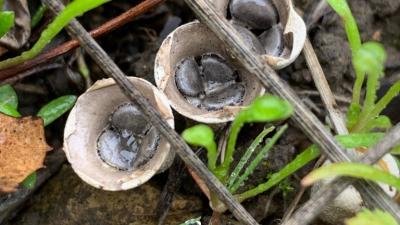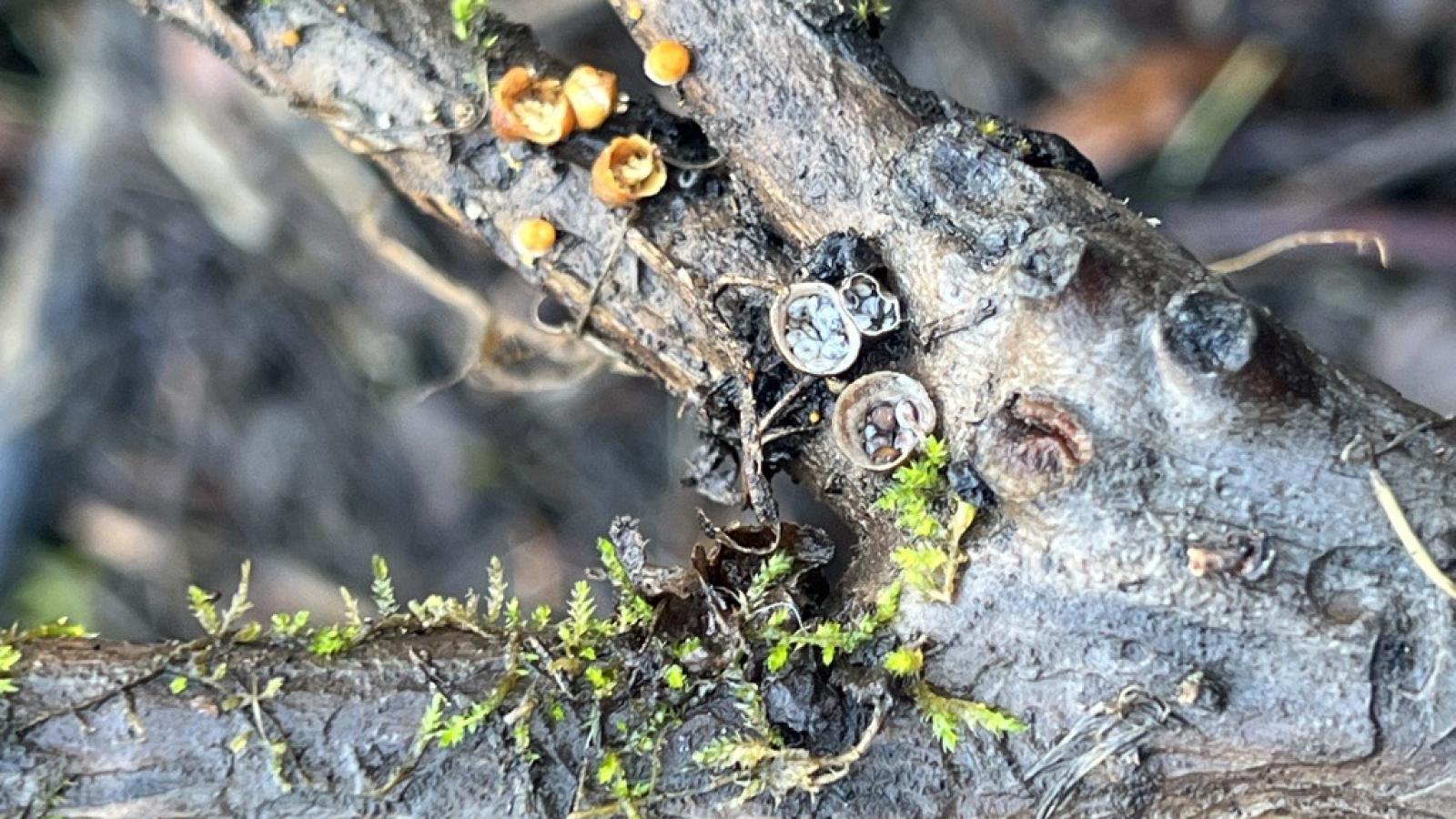No, this is not a tiny nest laid by the tiniest bird species in the world, we promise! This is a bird’s nest fungus (family Nidulariaceae). These saprophytic (decomposing) fungi can be found all over the world and are common in disturbed areas with plant debris or mulch, such as the sides of trails. Though they are common throughout the Bay Area and tend to grow in groups of hundreds, you really have to keep your eye out for them because they are tiny — only a centimeter across on average!
The most fascinating thing about this fungus is not its appearance, but how it reproduces. They reproduce through a "splash cup" mechanism, where rain is used to disperse their spores. The “eggs” in the bird’s nest are actually small capsules called peridioles which house the fungus’ spores. Each peridiole is connected to the nest by a slender, hollow stalk which contains a tightly coiled cord that has a sticky end. The “cup” part of the birds nest is shaped in such a way that when rain falls into the cup at the right angle, the peridioles are launched up to four feet away!
When the peridiole is launched from the nest, that cord will extend, and like glue, the sticky end will attach to a nearby object like a plant or branch. As the peridiole continues to fly, the cord will act like a tetherball chain winding around its pole, as the cord directs the peridiole to wind around whatever object it has stuck to. In the end, the peridiole either hangs vertically down, or is wound around the object. As it dries, the peridiole will split open and release its spores, which fall to the ground or are carried by the wind to new locations.


